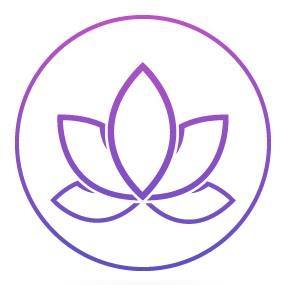The Two Core Reasons You Might Feel Creatively Stuck
Have you ever sat down to create, maybe with a journal, a blank canvas, or even a class plan, only to find yourself blocked? You feel the desire bubbling up. You want to express something. But nothing flows.
You’re not alone.
Creative blocks are part of every artist’s, teacher’s, and soul-led creator’s journey. But in my years of teaching and practicing mindful art, I’ve discovered that the reasons we get stuck are often quite simple.
I call them the two root causes of creative block: Overwhelm and Resistance.
Overwhelm: There is too much
Sometimes, it’s not that we don’t want to create, it’s that our minds are overloaded. To-do lists, expectations, emotions, and responsibilities pile up until we can’t hear ourselves think. We may want to express, but our nervous system is in survival mode. There’s no space to hear our inner voice, much less respond to it with creativity.
This isn’t a personal failing. It’s a signal. A reminder to make space for self-care and to offer ourselves compassion and the smallest “next step” to gain momentum.
Resistance: There is fear
Other times, we do know what’s true. A thought, image, or feeling rises up, but then fear creeps in. What if it’s too raw? Too messy? What if someone misunderstands or judges?
This inner resistance is sneaky. It disguises itself as procrastination or perfectionism. But really, it’s just a protective mechanism. A way our system tries to keep us safe. The risk of being fully seen can feel too great, so we stop ourselves before we even begin.
Together, Overwhelm and Resistance can silence our creativity. But once we name them, we can begin to meet them gently, with mindfulness, breath, and curiosity, and move through them, one small act of courage at a time.
Want to hear more about these two creative blocks?
Watch the short video: There Are Only Two Reasons You Get Creatively Blocked
Mindful Art activities are an easy way to practice self-care
What’s beautiful about mindful art activities is that they offer a soft landing place for both types of blocks. You don’t need to have a plan. You don’t need to say things perfectly. You just need to show up, with a pen, a brush, or a crayon, and breathe.
This isn’t about creating a masterpiece. It’s about reconnecting with your body, your heart, and your inner knowing. It’s about listening closely to the whispers beneath the surface.
Many of us begin simply: with scribbles, color washes, doodles, or fragmented phrases. And then something shifts. Slowly, you begin to hear yourself again.
If you feel unsure where to begin, Download the Free Mindful Art for Self-Care Workbook and get started with the easy prompts included.
“Could I Teach MINDFUL ART Too?”
Over time, for many of us, something else begins to stir. After experiencing the healing and clarity that comes from transformative mindful art activities, a quiet question may emerge:
“Could I share this with others?”
It’s a powerful moment, the point where a personal practice becomes a calling. And it’s often where the journey into Mindful Art Facilitation begins.
If this resonates with you, know that you’re not alone. Many teachers, therapists, artists, coaches, and creatives begin right here—curious, inspired, and maybe a little unsure. That’s where gentle guidance and structure can be so helpful.
Curious about becoming a Mindful Art Facilitator?
Free Resource: 8 Steps to Teach Mindful Art with Joy and ConfidencE
To support your journey, we’ve created a special workbook just for you:
“8 Key Steps to Teach Mindful Art with Joy and Confidence.”
This 12-page Free Guide walks you through the essential steps to start sharing Mindful Art, including creating your own workshops, circles, or personal offerings.
What Makes a Great Mindful Art Teacher?
It’s not about being a perfect artist. It’s not about having all the answers.
What we’ve found is that the most impactful Mindful Art Teachers are those who share from the heart. They’re the ones who know what it’s like to feel overwhelmed or stuck—and who have found a way through using color, shape, or story. They don’t teach from a place of “I have it all figured out,” but from a place of I’m walking this path too.
With the right support, your creativity can ripple outward—into classrooms, schools, Zoom circles, libraries, or living rooms. Your story, your presence, and your offerings can become safe spaces for others to come home to themselves.

